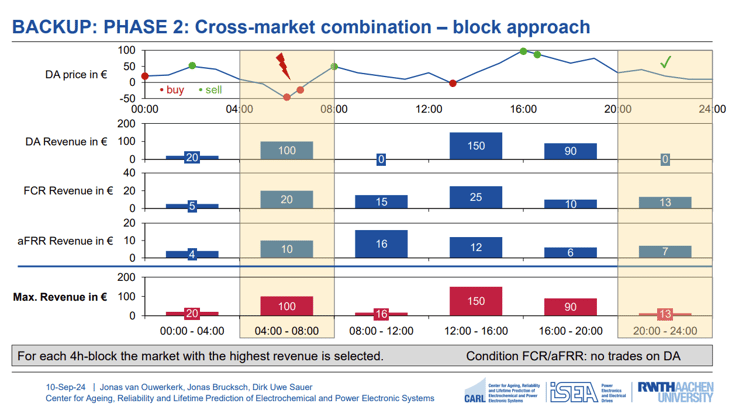Bringing transparency to battery revenue assessment
Together with ISEA (Institute for Power Electronics and Electrical Devices) of RWTH Aachen University, enspired is developing a battery index for the German market that will transparently map out the cross-market revenue potential for large-scale storage systems. Currently still under development, this independent, publicly accessible index is the first of its kind and will be finalized in the coming months, eventually integrating all relevant revenue streams. Jonas Brucksch and Jonas van Ouwerkerk of RWTH Aachen University are the principal developers on the project, while enspired contributes the operational trading knowledge necessary to build the index as closely as possible to real-life market situations.
On one side, the battery index covers the spot markets, including the day-ahead and intraday auctions as well as intraday continuous trading. On the other side, it focuses on the balancing markets FCR (Frequency Containment Reserve) and aFRR (automatic Frequency Restoration Reserve). The index aims to increase market transparency by providing a basis for investors, project developers, and traders to better evaluate potential revenues. It facilitates comparability but is not intended to reflect the actual maximum achievable cross-market optimization result. Rather, the index is designed so simply that it is easily comprehensible and usable for calculations by all users. The ultimate goal is to publish all calculations in an Excel-based spreadsheet format once the battery index reaches its more sophisticated release state.
The battery index and its 4-stage methodology
The methodology for the battery index consists of four phases. In phase 1, the single market revenues are calculated and combined by simple weighting. This step neglects potential conflicts between market designs but gives an indication of feasible market allocation. In phase 2, additional boundaries will be implemented to better align the tool with real-world applications.

In phase 3, the battery index will reach the required quality for comparing trading products and cross-market revenues. This is achieved by incorporating different market designs and possible trading strategies. Finally, phase 4 validates the index with a real battery asset. Currently, 1- and 2-hour systems are considered, each with a limit of one or two equivalent full cycles per day. In future versions of the battery index, those parameters will be flexibilized. You can find the current development status (updated weekly) of the battery index here.
Are you interested in marketing your battery?
Let's talk about your project.
